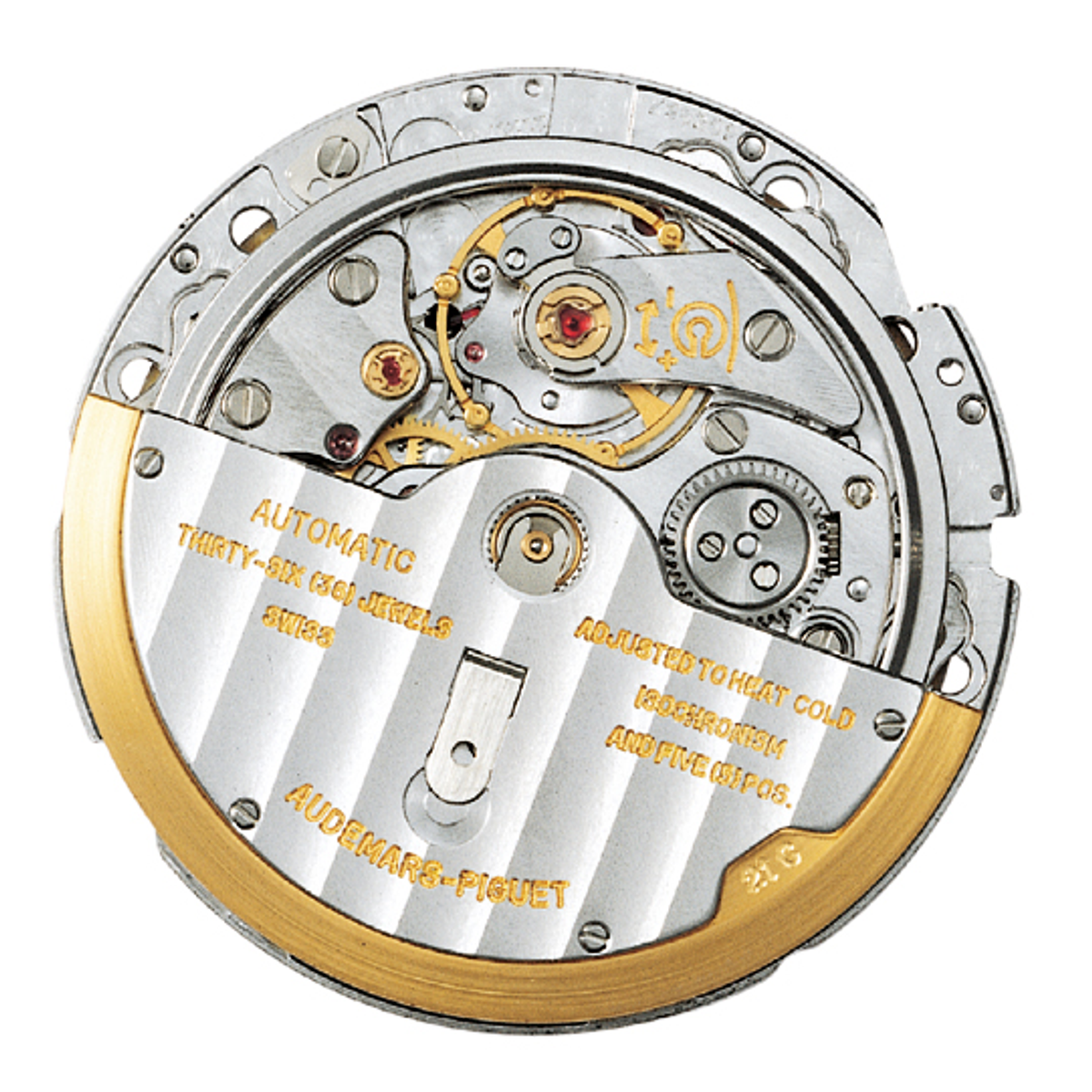The Royal Oak came to be referred to as the "first luxury sports watch” because steel suddenly appeared in a particularly refined interpretation.
Launch Year
1972
Functions
hours, minutes, date
Movement
mechanical self-winding
Distinctive features
steel case, octagonal bezel, blue dial with tapisserie motif
Royal Oak is a name every watch enthusiast knows. Launched at the Basel Fair in 1972, the Royal Oak was in fact designed a year earlier and submitted for approval to the brand’s leading market at the time: Italy. Freelance designer Gérald Genta is said to have drawn inspiration from the helmets worn by divers who maintained the dam on the Rhône River which flows through Geneva. However, the name chosen by Audemars Piguet refers to the eponymous Royal Navy ships, in particular the octagonal-shaped portholes of one of them. In England, royal oak is associated with a day in 1651 that became symbolic for the monarchy. On that day, during the Third Civil War, the future King Charles II escaped pursuit by Cromwell’s Parliamentarians – and thus from a death that could have changed the course of history – by hiding in an oak tree. The tree represents strength, longevity and majesty.
It nonetheless took several years for the Royal Oak to establish itself. In the early 1970s, the future of Swiss watchmaking was uncertain to say the least, undergoing not only the first oil crisis but also the quartz revolution. The trend was for demure models and high-end watches were gold, rather small and classical in appearance. Against all expectations, Audemars Piguet dared to combine luxury, steel, a large size and industrial design.
The Royal Oak came to be referred to as the "first luxury sports watch” because steel, essentially known for its sturdiness, suddenly appeared in a particularly refined interpretation. It was also used in a sophisticated construction that was difficult to achieve, given the available machining methods and the hardness of the metal. The result was complemented by resolutely top-grade polished and brushed finishes. In terms of design, the model boasted bold and powerful features that were well equipped to stand the test of time. The deliberately angular lines were immediately noticeable, in particular the octagonal bezel and its hexagonal screws, which were always made of gold, not to mention the visible sealing joint serving to highlight the technical nature of the model. One originality of the case was that it had no lugs but rather a bracelet whose trapezoidal links were arranged in descending order for a tapered effect, and which seamlessly integrated the case to a degree rarely seen at the time. Meanwhile, the dial stood out with its tapisserie decoration composed of squares separated by channels.
In 2012 Audemars Piguet celebrated the 40th anniversary of the Royal Oak by launching a 39mm model that was almost identical to the original and which defines the current standard of the extra-thin line. The small differences lay in the updated style of the inscriptions and the blue background of the date disk which is colour-coordinated to the dial. Even the movement, which is still produced by the Manufacture, remained the same: Calibre 2121, a mechanical self-winding movement measuring 3.05mm thick and a benchmark in the field of ultra-thin movements. Slenderness doubtless played a role in the success of the first Royal Oak, effectively counterbalancing anything that might have been deemed excessive in the design and preserving the elegance expected from a luxury watch.
For the 50th anniversary of this legend in 2022, Audemars Piguet released a new generation of the original Royal Oak “Jumbo” Extra-Thin in a 39mm size. Cased in steel, yellow gold, rose gold or platinum, it uses the hours-minutes-date Calibre 7121 movement which incorporates an aerodynamic balance wheel. Slightly thicker than its predecessor at 3.2mm, this new movement stores more energy and is wound in both directions by the “50 Years” rotor. An Openworked version, also in celebration of the 50th anniversary, is powered by Calibre 7124 with renditions in steel and rose gold.
Key Characteristics
- Design by Gérald Genta
- Steel case, octagonal bezel, self-winding movement



